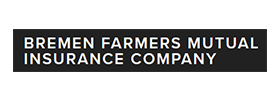In 2024 so far, the National Weather Service Kansas City has issued approximately 22 tornado warnings and about 136 severe thunderstorm warnings. Some storms on a smaller scale aren’t doing much beyond minor property damage, like taking down trees and destroying shrubbery. But larger storms, like the ones we saw in March and April featuring 70mph winds and half-dollar-sized hail, have the potential to wreak havoc on properties, cause city-wide power outages, and even oust families from their homes.
If you’ve recently experienced a storm in your area, or even been evacuated due to the looming threat of one, returning home can be a stressful endeavour, especially if your property has been damaged. Here at AHI Group, we can’t stop the damages from occurring, but we can give you some insights into next steps once the storm has passed over.
Safely re-entering your home
The anxiety of not knowing if your home is still standing after a severe storm is a burden many face during such trying times, especially if you were asked to evacuate due to an imminent threat in your area. It’s natural to feel a mixture of hope and fear as you return to assess the aftermath. While you may be eager to see your home and belongings, ensuring your safety and the safety of those with you is the most important thing during this time. Here’s a guide to help you safely re-enter your home following an evacuation due to a severe storm.
Wait for official clearance or permission from authorities
Do not return to your home until local authorities have deemed it safe. Listen to news updates, check local emergency services, and follow their guidance. They will inform you when it is safe to return and if there are any specific hazards to be aware of.
Check the area for hazards
As you approach your home, be alert for potential dangers such as downed power lines, broken gas lines, and unstable structures. Do not enter your property if you observe these hazards. Contact the appropriate utility companies or emergency services if you encounter them.
Assess the exterior of your home
Before entering, walk around the exterior of your home to inspect for visible damage. Look for issues like structural damage, broken windows, or compromised walls. If you notice significant damage, it may not be safe to enter. In such cases, consult a professional before proceeding.
Enter with caution
If the exterior appears stable, enter your home cautiously. Use a flashlight if power is out, and do not use open flames or lighters due to potential gas leaks. Be mindful of debris, slippery floors, and other hazards inside.
Check for structural integrity
Once inside, assess the structural integrity of your home. Look for cracks in the walls or ceilings, sagging floors, or other signs of instability. If you notice any of these issues, leave the premises immediately and contact a structural engineer or your local building department.
Inspect your utilities
Check for any signs of damage to your utilities. Smell for gas leaks, and if you suspect a leak, leave immediately and call the gas company. If you see damaged electrical wiring or water damage near electrical outlets, do not touch them and contact a professional. Turn off your main power and water supply if you know how and can do so safely.
Document all damages
Take photographs or videos of any damage for insurance purposes. Documenting the condition of your home can help with filing insurance claims and provide a record of the extent of the damage.
Initiate the clean-up process
If it is safe to do so, start the clean-up process. Wear protective gear such as gloves, masks, and sturdy shoes. Be cautious of mold, contaminated water, and other potential health hazards. Dispose of spoiled food and clean all surfaces that may have been contaminated by floodwaters or debris.
Notify your insurance company
Notify your insurance company as soon as possible to start the claims process. Provide them with the documentation of the damage and any necessary information. They can guide you through the next steps and help arrange for professional assessments and repairs.
Hire a professional
For significant damage or safety concerns, seek the help of professionals. Contractors, electricians, plumbers, and other specialists can safely assess and repair your home. Do not attempt to make major repairs yourself unless you are qualified to do so.
Look into state resources
Tornadoes can occur in any state, and in the states where they tend to be most common many governments have stepped up to provide resources or safety guides to their citizens. For example:
These are just a few samples of the resources that may be available. Check out these guides to see if they offer any specific information based on your state, or if they contain any information pertaining to any relief programs you may be eligible for in addition to your existing insurance policy.
Filing a claim with your insurance company
Home insurance covers homeowners for damages due to unexpected or inclement weather, like tornadoes and storms. Unless these events are specifically excluded from coverage, you can expect to have some protection under your home insurance policy to help rebuild your home. Even named perils policies will generally include storms.
However, coverage limits may vary. While you won’t be able to update anything after a loss, it’s a good idea to review your policy regularly to ensure you have sufficient protection for these kinds of events.
Filing a claim is relatively straightforward. Our advice? Do it as soon as possible. Once you’ve ensured everyone is safe, call your insurance company. Events like these will mean a lot of people will be calling in for claims, so get in as soon as you can to get your claim started and settled. Once your claim process has started, an adjuster will be assigned to your case who can help you through and answer any questions you might have during this time.


























